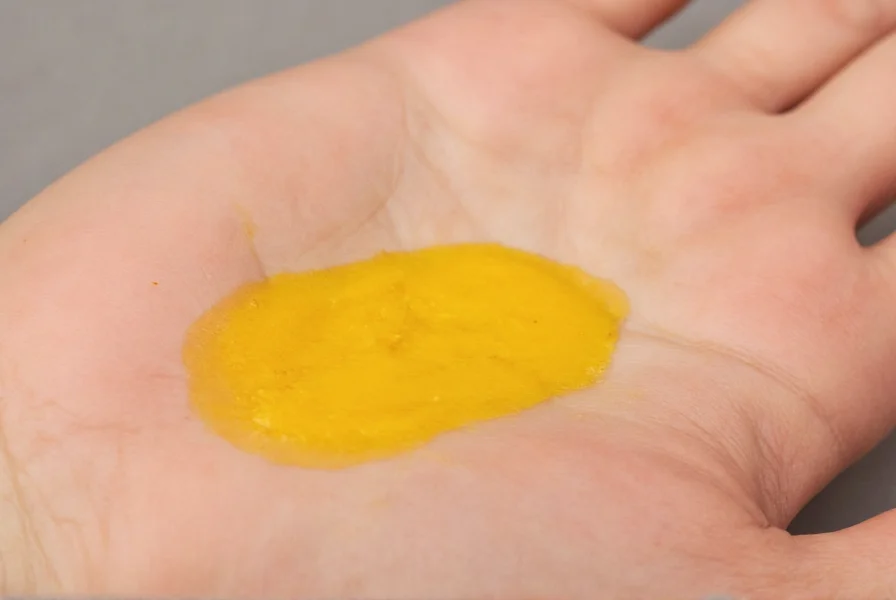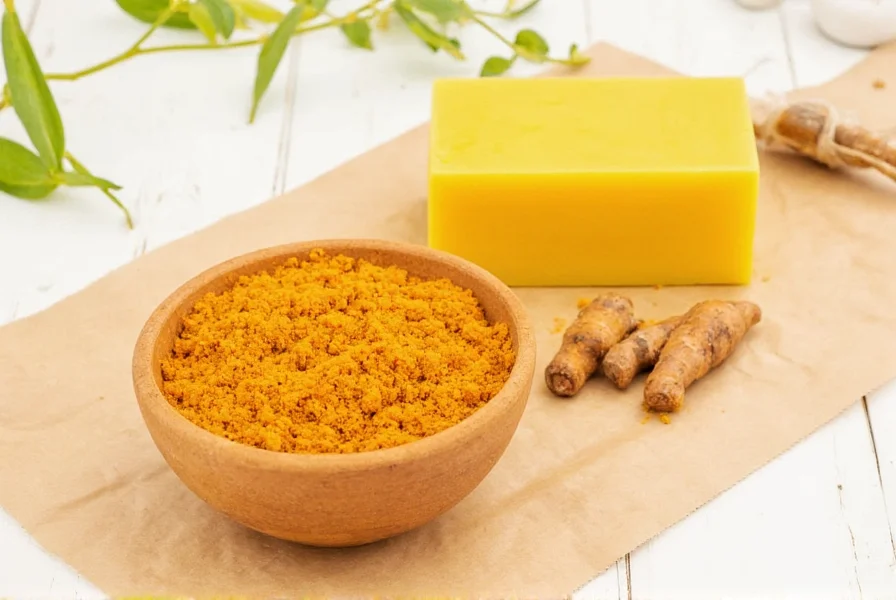Understanding Turmeric Soap and Its Potential Reactions
Turmeric soap has gained popularity in natural skincare routines due to turmeric's purported anti-inflammatory and antioxidant properties. While many users experience benefits like improved skin clarity and reduced inflammation, it's essential to understand potential side effects before incorporating this product into your regimen. Unlike pharmaceutical products with standardized formulations, natural skincare products like turmeric soap vary significantly in concentration and additional ingredients, affecting how your skin might react.
Common Turmeric Soap Side Effects
The most frequently reported turmeric soap skin irritation issues stem from the natural pigments in turmeric rather than harmful chemical reactions. Understanding these common reactions helps differentiate between normal temporary effects and concerning symptoms.
Temporary Skin Staining
Yellow-orange skin discoloration represents the most common turmeric soap side effect. This temporary staining occurs because curcumin, turmeric's active compound, acts as a natural dye. The discoloration typically:
- Affects lighter skin tones more visibly
- Appears most noticeable on hands, face, and neck
- Washes off within hours with regular cleansing
- May linger longer on dry or calloused skin areas
| Skin Type | Staining Duration | Prevention Tips |
|---|---|---|
| Fair/Light | 2-6 hours | Use lower concentration formulas |
| Medium/Olive | 1-4 hours | Rinse thoroughly after use |
| Dark | 30-90 minutes | Less noticeable, minimal concern |
Mild Skin Irritation
Some users experience mild turmeric soap skin irritation, particularly those with sensitive skin conditions. Symptoms may include:
- Temporary redness that subsides within 30 minutes
- Mild dryness or tightness after washing
- Subtle itching that resolves without intervention
These reactions often occur during initial uses as skin adjusts to the product. Reducing frequency of use (starting with 1-2 times weekly) typically minimizes these temporary effects.

Potential Allergic Reactions to Turmeric Soap
While true turmeric allergies remain uncommon, they do occur. Recognizing the difference between normal temporary reactions and allergic responses is crucial for safe usage.
Identifying Allergic Reactions
Signs of a turmeric soap allergic reaction typically appear within minutes to hours after first use and may include:
- Intense itching that worsens over time
- Hives or raised red bumps at application site
- Swelling of facial features or extremities
- Burning or stinging sensations that intensify
- Blisters or oozing skin in severe cases
If you experience these symptoms, immediately wash the area with mild soap and cool water. Apply a fragrance-free moisturizer or hydrocortisone cream for relief. Seek medical attention if symptoms persist beyond 24 hours or affect breathing.
Who's at Higher Risk for Reactions
Certain individuals face increased risk of turmeric soap side effects:
- People with known allergies to ginger, cardamom, or other Zingiberaceae family plants
- Those with pre-existing skin conditions like eczema or rosacea
- Individuals using prescription topical medications
- People with extremely sensitive or reactive skin
If you fall into these categories, consult a dermatologist before trying turmeric soap. A professional patch test provides the safest introduction to this product.
Factors Influencing Turmeric Soap Reactions
Several variables affect how your skin responds to turmeric soap, making understanding these factors essential for safe usage.
Product Formulation Matters
The concentration of turmeric and accompanying ingredients significantly impacts potential side effects. Commercial turmeric soaps vary widely in their formulations:
- Handmade artisanal soaps may contain higher turmeric concentrations
- Mass-produced versions often include lower concentrations with stabilizers
- Products containing additional essential oils increase irritation risk
- Soaps with exfoliants like walnut shells compound potential irritation
Reading ingredient labels helps identify potential irritants beyond just turmeric content. Products listing "curcumin" rather than "turmeric root powder" typically contain more concentrated active compounds.
Usage Patterns and Side Effects
Your application method directly influences turmeric soap skin irritation potential:
- Frequency: Daily use increases reaction risk compared to 2-3 times weekly
- Duration: Leaving soap on skin longer than 60 seconds heightens staining
- Rinsing: Incomplete rinsing leaves residue that intensifies discoloration
- Application area: Facial use requires more caution than body application
For first-time users, limit initial applications to 20-30 seconds with thorough rinsing. Gradually increase duration if no adverse reactions occur.
Preventing and Managing Turmeric Soap Side Effects
Proactive measures significantly reduce the likelihood of adverse reactions while allowing you to potentially benefit from turmeric's properties.
Essential Patch Testing Protocol
Before full facial or body use, conduct a patch test following these steps:
- Clean a small area behind your ear or on inner forearm
- Apply a thin layer of soap lather to the test area
- Leave on for 30 seconds, then rinse thoroughly
- Wait 24 hours without applying other products to the area
- Check for redness, swelling, or irritation before proceeding
If no reaction occurs, try a second test with 60 seconds of application time. Only proceed to regular use after two successful patch tests.
Minimizing Staining and Irritation
Implement these practical strategies to reduce common turmeric soap side effects:
- Wear rubber gloves when washing hands to prevent nail staining
- Rinse skin with cool water for at least 20 seconds after application
- Follow with a gentle, pH-balanced cleanser to remove residual pigment
- Apply moisturizer immediately after patting skin dry
- Use only every other day when first introducing the product
For persistent yellow stains, try a paste of baking soda and water gently rubbed on affected areas. Avoid harsh scrubs that might irritate skin.
When to Avoid Turmeric Soap Completely
Certain individuals should avoid turmeric soap due to heightened risk of adverse reactions:
- Those with documented turmeric or curcumin allergies
- People experiencing active skin infections or open wounds
- Individuals using prescription retinoids or strong exfoliants
- Pregnant women without prior consultation with their healthcare provider
- People with severe eczema or psoriasis flare-ups
If you have sensitive skin conditions, consider turmeric-infused products with lower concentrations, such as serums or creams, which typically cause fewer reactions than soap formulations.
Benefits vs. Risks: Making an Informed Decision
Understanding turmeric soap benefits and risks helps determine if this product suits your skincare needs. Potential benefits include anti-inflammatory effects, antioxidant protection, and possible improvement in skin clarity for some users. However, these potential advantages must be weighed against individual skin sensitivity and reaction history.
For most users with normal skin, turmeric soap side effects remain mild and manageable with proper usage techniques. The temporary nature of most reactions—particularly the common staining issue—makes this product viable for many seeking natural skincare alternatives. Those with sensitive skin or specific concerns should proceed with caution, prioritizing patch testing and gradual introduction.
Consulting Professionals About Turmeric Products
When in doubt about potential reactions, consult a dermatologist or skincare professional. They can provide personalized guidance based on your skin history and help distinguish between normal temporary reactions and concerning symptoms. Professional advice proves particularly valuable if you have pre-existing skin conditions or take medications that might interact with topical turmeric products.











 浙公网安备
33010002000092号
浙公网安备
33010002000092号 浙B2-20120091-4
浙B2-20120091-4